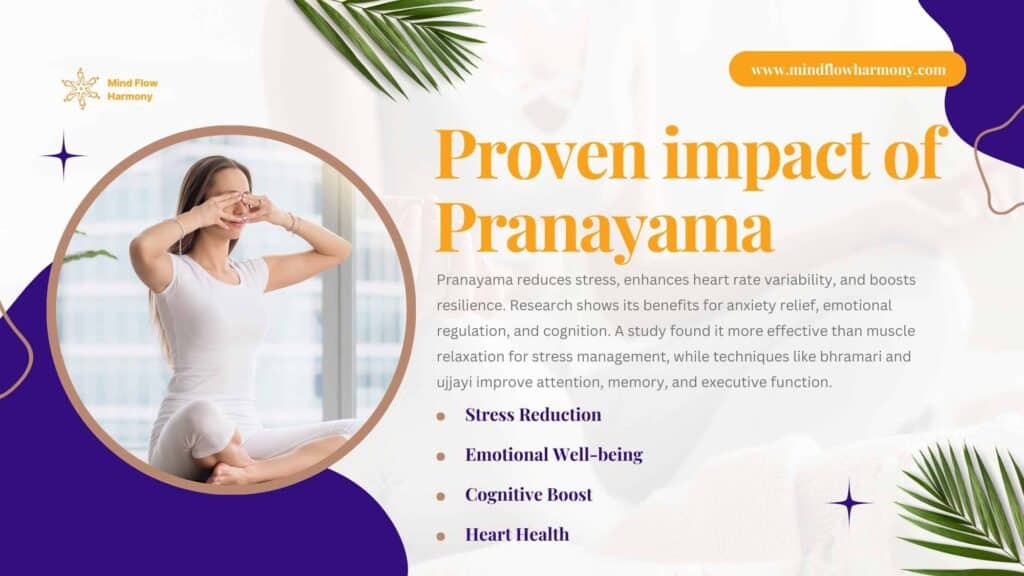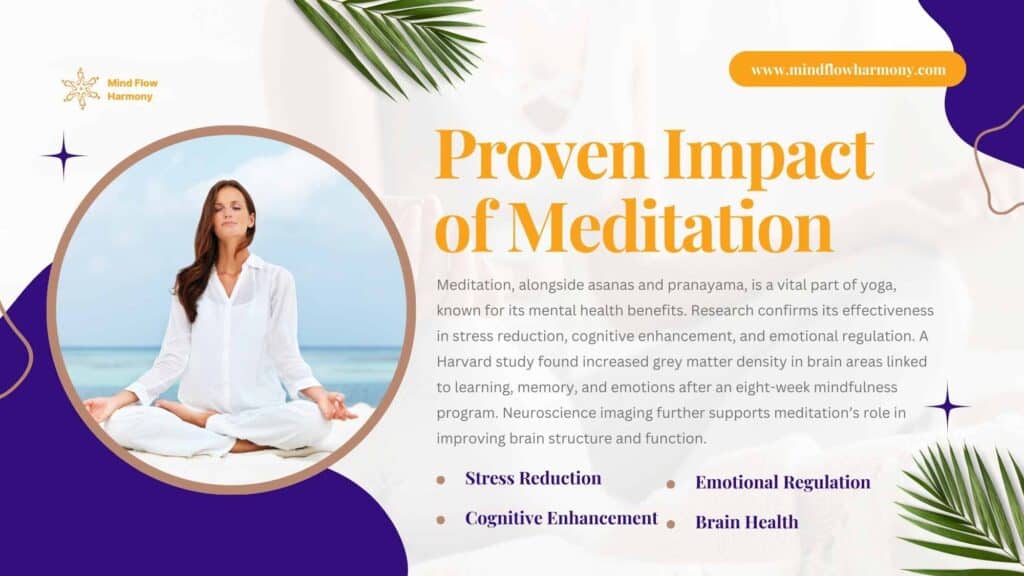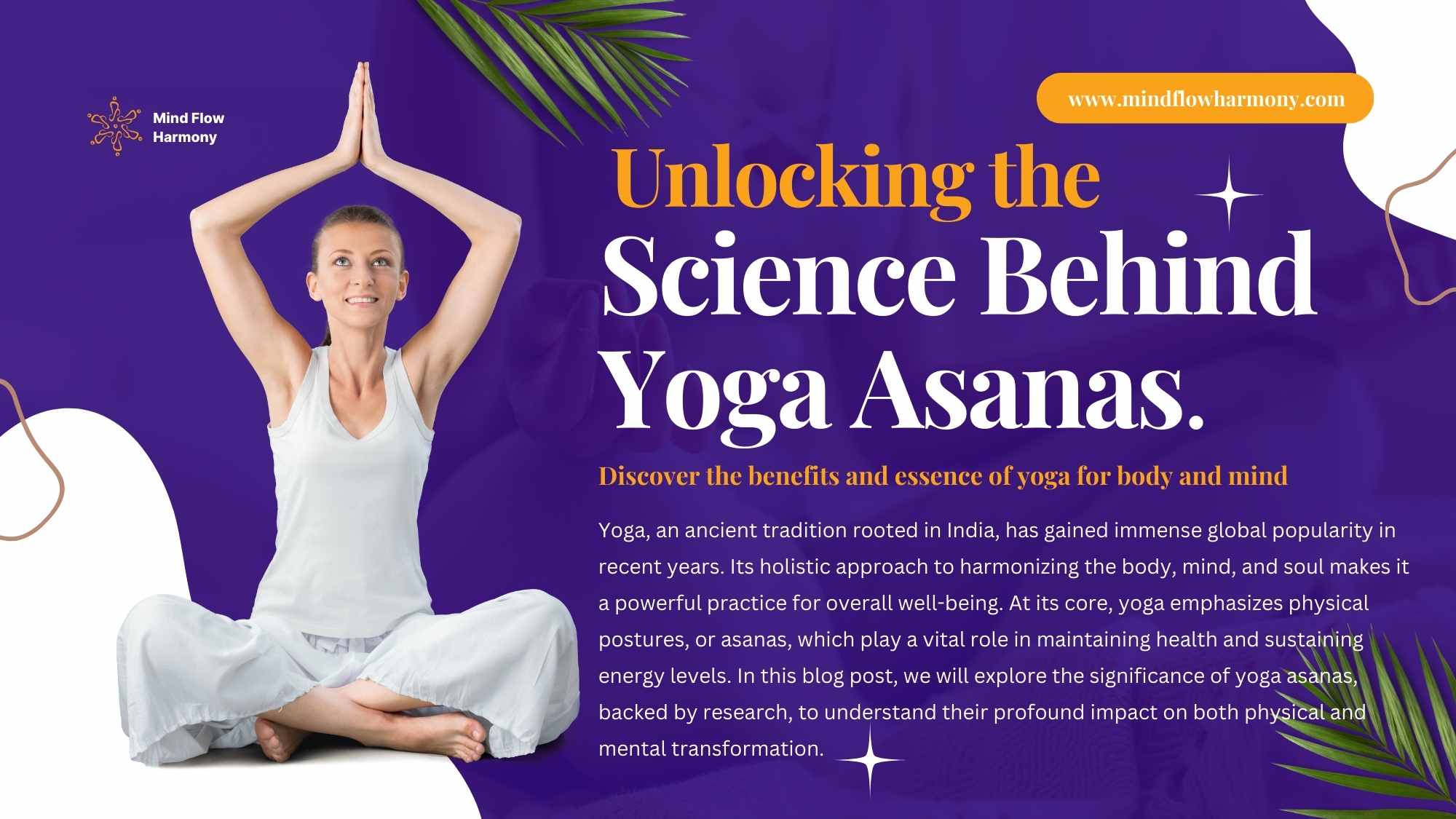Yoga, an enduring tradition that stems from India, has lately become very popular globally. Thanks to its all-in-one principle in the domains of body, mind, and soul. Yoga is a discipline that focuses on body postures, known as asanas, which are crucial for maintaining health and preserving energy. In this blog post, we will look at yoga asanas, reviewing research evidence to demonstrate how they influence both individuals’ bodies and minds in a transformational way.
Understanding Yoga Asanas

Yoga asanas involve a large variety of postures meant to enhance flexibility, strength, steadiness, and relaxation. These poses can be practised in combination with deep breathing practices named “pranayama” and meditation. Modern science has extensively reviewed the practice of yoga, confirming its effectiveness alongside its long-standing tradition.
A deeper understanding of its basics will be evidence of the issue of the eternal wisdom of yoga. It represents an indisputable contribution in the modern world to holistic health and capabilities.
Scientific Investigation into Yoga Poses
Lots of investigations about the physiological and psychological benefits of yoga postures have been conducted by experts. The results are very impressive, as yoga has a powerful impact on different health indices.
A meta-analysis published in the Journal of Alternative and Complementary Medicine (JACM) showed that yoga interventions show a marked improvement in flexibility, muscular strength, and endurance. This result shows the efficiency of yoga asanas’ complex workouts as a complete fitness program. It ensures the physical well-being of a human being.
Case study
Over the past few years, substantial progress in technology has allowed researchers to delve into the molecular mechanisms that shape how poses in yoga affect cells. As a case in point, an oxidative medicine and cellular longevity journal study was carried out. The consequences are the benefits of yoga-based lifestyle interventions on gene expression levels within PBMCs.
As the researchers showed, there was a modification of expression in some genes related to immunity, inflammation, and stress-responsive signalling. It indicates that yoga may work through the modulation of gene expression.
Proven impact of Pranayama

Pranayama, the art of rhythmic breathing, besides the poses, is another significant aspect of the practice of yoga.
Through different research projects, there are current proofs of the major pranayama effects on physical functions. Examples include stress reduction, lung strengthening, and sympathetic nervous system regulation.
Physiological effect:
In an International Journal of Yoga study, it was discovered that regular pranayama practice can significantly decrease perceived stress. This improves cardiac autonomic modulation and heart rate variability. It is a manifestation of increased stress resilience.
Psychological effect:
The effects of pranayama go way beyond the physical realm. The research has confirmed the possibility of psychological aspects such as stress relief, anxiety reduction, and better emotional health.
In the Journal of Alternative and Complementary Medicine, the randomised control trial has also been published. The study sought to evaluate the influence of pranayama vs. progressive muscle relaxation on the level of stress and anxiety among college students.
The analysis showed both applications were associated with an apparent reduction in stress and anxiety. The individuals who participated in pranayama did better in terms of emotion regulation and general satisfaction.
Simultaneously, pranayama has been found to impact cognitive capability and lucidity. In the same research, it was concluded that breathing meditation has positive effects on the cognitive performance of healthy individuals.
The researchers discovered that the participants who used deep breathing techniques, such as bhramari pranayama and ujjayi pranayama, showed changes in several cognitive functions. It includes attention, memory, and executive functioning, compared with the control group.
Proven Impact of Meditation

Besides asanas and pranayama, meditation is another integral component of yoga practice. It draws its power from its mental health-boosting effects. Scientific research consistently indicates that meditation is a highly effective stress management tool, regulator, and cognitive enhancer.
The researchers of Harvard Medical School, in their randomised controlled trial, reported that there were participants who showed significant spikes in grey matter density in areas of the brain. These relate to learning, memory, and emotional regulation after an eight-week mindfulness meditation program. Such data indicate the neuroplasticity-enhancing properties of meditation, making it a very attractive clinical treatment.
Moreover, meditation can even be linked to cognitive and brain health. Research with neuroscience imaging has demonstrated that meditation practice has an effect structurally and functionally on the brain. It includes the areas that are related to attention, memory, and emotional management.
Join 200 Hour Meditation Teacher training in Rishikesh see the meditation impact on your life.
Proven benefits of physical fitness yoga

Yoga asanas are not just beneficial for someone’s mental well-being. They also have physiological advantages. That’s why they are precious for conveying general physical health.
A study published in the Journal of Physical Activity and Health proved that a 12-week yoga programme for inactive adults led to significant gains in muscular strength, endurance, and flexibility.
Further, yoga practices incorporate breathing exercises, mental relaxation, and physical activity. It is shown to be an especially active way of dealing with chronic problems like hypertension, diabetes, and musculoskeletal disorders.
Improvement in Flexibility:
The asanas, which focus on stretching and lengthening muscles, are the main players in improving flexibility. People who have practically deepened their level of physical activity through yoga can expect:
- Improvements in joint mobility.
- Flexibility, along with a reduction in the risk of injuries.
- Improvement in overall physical activity.
Enhancement of Muscular Strength and Endurance:
Yoga is a discipline that involves harmonious actions of the muscles arrays to keep up the posture and to change them. Therefore, yoga improves muscular strength and endurance as its effects. It has been proven that regular yoga practices provide the following benefits:
- Improved muscle tone.
- Gained muscle strength.
- Increased muscular endurance.
- Supporting overall physical fitness.
Boost in Cardiovascular Health:
Although most people widely associate yoga with strengthening and flexibility, some yoga series and movements are cardio-focused too. Research has revealed that the practice of moving yoga, also known as power yoga and vinyasa flow yoga, can increase heart rate and improve cardiovascular fitness. These exercises are continuously performed together in the above sequences.
Stress Reduction and Relaxation:
Physical fitness Yoga takes in awareness of the mind and breath control. It helps with relaxation and the reduction of stress. Research shows that yoga postures should be combined with focused breathing and done with a detached mind. It eventually activates the body’s relaxation response and brings down stress hormone (cortisol) levels. At the same time, it increases the person’s state of calmness and well-being.
Improvement in Balance and Coordination:
Some of the yoga exercises require focus, attention, and balance. This kind of activity helps you improve proprioception and coordination. It has been proven that practising physical fitness yoga in a routine can make an individual able to maintain the right balance and be stable. It further lowers the chances of falls and overall body awareness as well.
Pain Management and Rehabilitation:
Physical fitness Yoga is a proven technique for dealing with chronic pain conditions and aiding in speedy recovery from injuries. According to studies, some yoga poses are practised with mindfulness to get a powerful result and curb pain. It also enhances the functionality of joints and speeds up recovery from injuries.
Enhancement of Body Awareness and Mind-Body Connection:
Physical fitness Yoga is a practice that focuses on the synchronisation of breath, movement, and mental awareness. This allows for a deeper connection between the body and mind. The researchers have demonstrated that the effects of yoga postures are due to the following:
- Body awareness
- Meditation
- Proprioception
- Creating self-awareness
- Improved wellness
Conclusion
When yoga improves physical strength and spiritual resilience, as well as emotional stability and spirit development, we find that the practice is truly multi-sided, with a vast array of benefits not only for individuals but for the whole community as well. Appreciating yoga as a science enables us to use the healing tools naturally to live a healthier, happier, and more balanced life.








